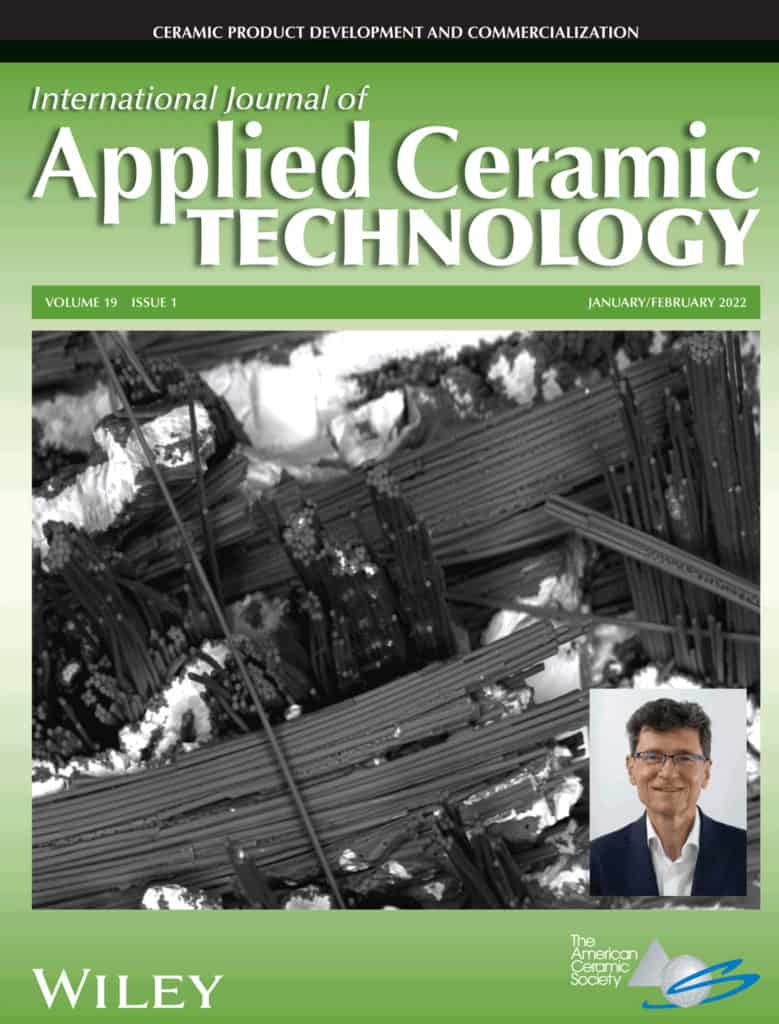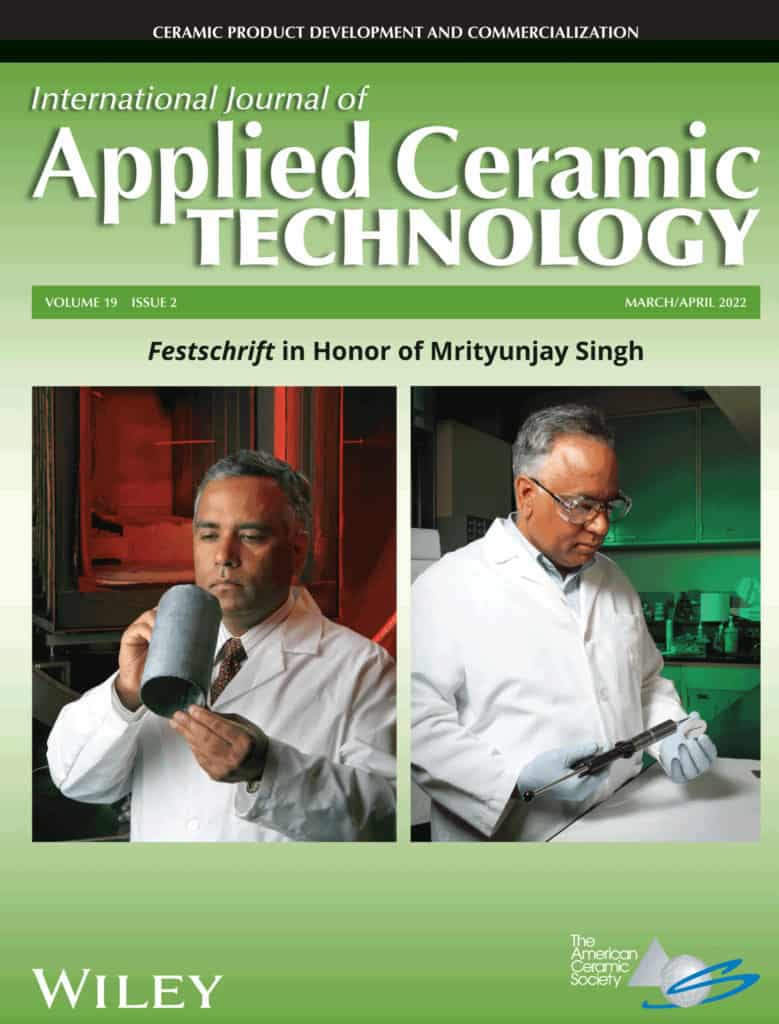
[Image above] Credit: ACerS
Around the turn of the 21st century, the leadership of ACerS’ Engineering Ceramics Division (ECD) recognized the lack of journals with aims and scopes targeting research from ceramic engineers and applied scientists. So, they created the International Journal of Applied Ceramic Technology (ACT)to address this need.
Now in its nineteenth year, ACT publishes more than 200 articles per year from researchers around the globe. Recently the editors of ACT, working with guest editors, assembled special compilations dedicated to distinguished members of ECD as the first two issues of 2022.
In the January/February issue (Volume 19, Issue 1), colleagues of University of Bayreuth retired professor Walter Krenkel published 19 papers in honor of his retirement in 2021. Krenkel is known worldwide for his research on ceramic matrix composites (CMC), the liquid silicon infiltration (LSI) process, and the invention of the C/C-SiC ceramic brake disc.
His storied career began at the German Aerospace Centre. After getting his Ph.D. at the University of Stuttgart, Krenkel joined the faculty of the University of Bayreuth. His career took him to the office of the Dean of the Faculty of Engineering Science at Bayreuth. A Society Fellow, he has been awarded numerous accolades, including the ACerS Bridge Building Award, and served as guest professor at several universities around the world.

Among his technical achievements, he helped transfer the LSI-process from the laboratory to industry, and it is now the most established high-temperature process for manufacturing CMCs at reasonable costs. His work is also influential in the fields of polymer-derived ceramics, structural and functional materials, and tribological properties of ceramic friction materials.
The articles in the January/February issue of ACT, which is free to read for all of 2022, span the many topics of Krenkel’s career and are a fitting tribute. If you work in the processing and characterization of CMCs, including carbon/carbon, carbon/SiC, metal-ceramics hybrids, and others, you should take advantage of the information presented in this special issue.
The recently released March/April issue (Volume 19, Issue 2) is a special Festschrift issue entitled “Global advances in emergent materials, manufacturing, and characterization technologies” in honor of Dr. Mrityunjay “Jay” Singh. It is fitting that this work appears in ACT because Singh, who foresightedly recognized the importance of applied research and development work on the commercialization of engineered ceramics, products, and processes, is a founding father of this journal.
Singh received his Ph.D. in metallurgical engineering from the Indian Institute of Technology-BHU in Varanasi, India. After post-doctoral studies, he started his life-long research career on advanced ceramics and composite materials at NASA Glenn Research Center in Cleveland, Ohio.

His research has addressed both basic and applied questions and has been instrumental in establishing design, manufacturing, integration, and performance limits for single and multi-materials used in a wide variety of aerospace and ground-based applications. His contributions have made an impact from monolithic ceramics and ceramic composites to high-conductivity foams and composites for thermal management and thermal energy storage systems. His contributions to shuttle return to flight and human space flight safety are regarded as one of the most innovative and mission critical.
Currently chief scientist at the Ohio Aerospace Institute in Cleveland, Ohio, Singh served as ACerS president (2015–16) and is a Fellow and Distinguished Life Member of the Society. He has been globally recognized for his long-term and outstanding contributions to the science and technology of advanced materials and manufacturing technologies. His tireless efforts in mentoring students and young professionals, as well as promoting and developing collegial networks and collaborations among the materials community worldwide, have been widely recognized and appreciated.
His work has garnered numerous awards and accolades, which are detailed by guest editors in the introduction of the special issue.
This special Festschrift issue contains the most cutting-edge papers on emergent technologies related to advanced ceramics and composites by top-class researchers, which are broadly grouped into categories of advanced synthesis and processing, nanostructured and 2D materials, polymer-derived and porous ceramics, biomaterials, energy materials, additive manufacturing, ceramic integration technologies, ceramic matrix composites, and modeling and characterization.
We hope you enjoy reading the articles in these two issues.
Read the January/February 2022 issue:
https://ceramics.onlinelibrary.wiley.com/toc/17447402/2022/19/1
Read the March 2022 issue:
https://ceramics.onlinelibrary.wiley.com/toc/17447402/2022/19/2
